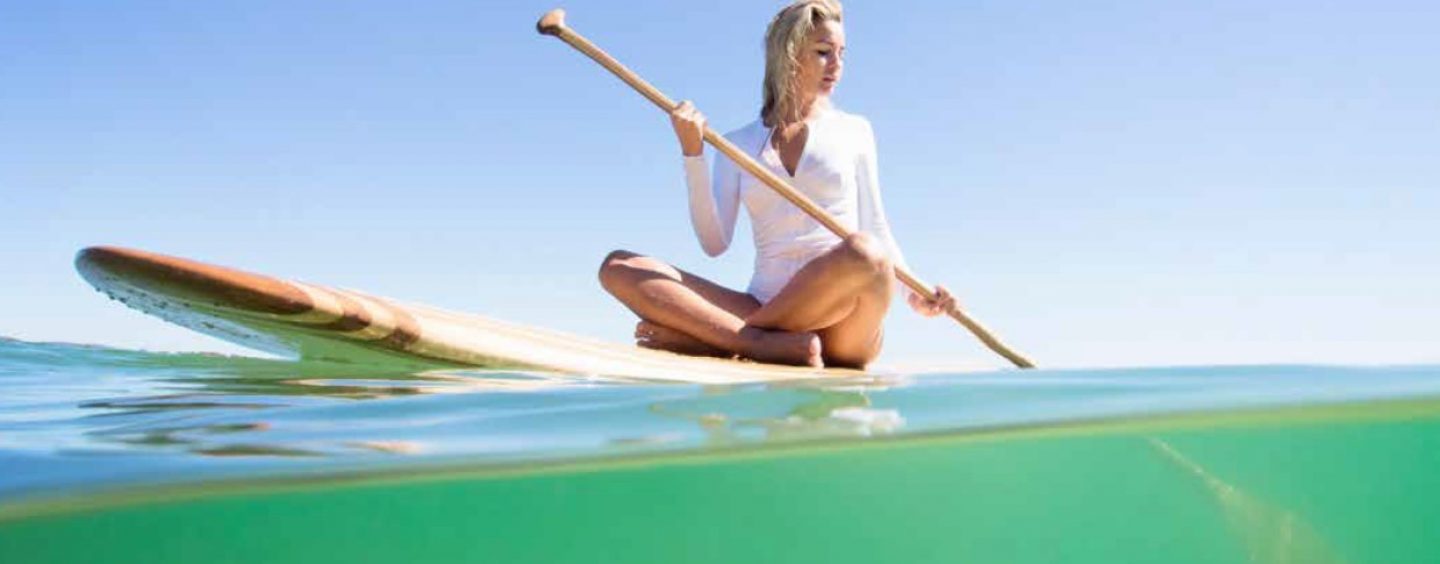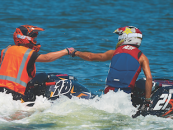By Tanya Rabe
In early 2022, Gold Coasters farewelled the spirited woman who introduced to Australians, one of fashion’s most iconic and controversial swimwear designs: the bikini.
Paula Stafford was born in 1920 and having studied maths, chemistry, and physics at Melbourne Girls Grammar with a dream to become an architect, she was advised by the headmistress to choose a ‘more feminine career’. It was then that Paula applied her creative flair to fashion design.
Stafford and her husband moved to the Gold Coast after marrying in 1943. At that time, the fledgling fashion designer began cutting her swimsuits in half to wear on Surfers Paradise Beach where the couple were running their family business. To Stafford’s surprise, her new two-piece caught the attention of other women who approached her with a request to purchase.
The Stafford bikini rose to prominence over the next couple of decades, but not without controversy. In 1952, a woman wearing a Stafford bikini drew a great deal of attention when she was barred from a beach for being immodest. In response, Stafford sent five women wearing her design back to the same beach in what became an unintended yet prosperous PR coup for her brand.
 To locals and tourists alike, we are drawn to the Gold Coast for its year-round summery vibe and beach culture. Surfing, SUPing, boating, kayaking, swimming and sunbathing are synonymous with our Gold Coast lifestyle, and we dress accordingly. The bikini has been the summer uniform of choice for many Gold Coast women, and at times the occasional bloke as well.
To locals and tourists alike, we are drawn to the Gold Coast for its year-round summery vibe and beach culture. Surfing, SUPing, boating, kayaking, swimming and sunbathing are synonymous with our Gold Coast lifestyle, and we dress accordingly. The bikini has been the summer uniform of choice for many Gold Coast women, and at times the occasional bloke as well.
It wasn’t until the 1980s that it was revealed our well-oiled, sun worshiping, bikini clad bodies were starting to suffer from overexposure to UV radiation from the sun. Skin cancer was rising and for those of us who can remember, the Slip- Slop-Slap campaign was developed to increase the awareness of skin cancer and melanoma and how we could prevent this insidious disease.
Australia has the highest melanoma rates in the world, with Queensland taking the title as the “Skin Cancer Capital of the World”. A whopping 95% of melanomas are caused by overexposure to UV radiation from the sun. The Cancer Council estimates 16,800 Australians will be diagnosed with melanoma by the end of this year.
This data was enough for local swimwear designer, Ally Delaney to rethink swimwear design for herself and her beach loving Sisterhood. Her brand Wet Leopard has a purpose to make sunconscious swimwear, glamorous and functional for women. Her extensive research and development coupled with innovative design have transformed the traditional bikini for sun smart, sexy women around the world.
The swimwear range is made from UPF50+ sun protection fabric with inbuilt bust support using patented underwire technology. Wet Leopard swimwear are tailored with French seams in a corset-like design giving women of all shapes and sizes a feminine, flattering look. Most sun protective swimwear have basic elastic shelf bras, offering no real support. Ally says, ‘They’re uncomfortable and squash the bust all together to give an unflattering mono-boob.’
Gone are the days of sunbaking and alongside them, we say au revoir to ugly rash guards and box-cut one-pieces. Wet Leopard have revolutionised the swimwear market where women can feel fully supported running along the beach or going for a surf in a sexy range of beautiful, sustainable fabrics. ‘Our swimwear is ethically made in Australia, designed to last for as long as possible, not just one or two summers like some swimwear’, explains Ally passionately.
We have grown a lot since Paula Stafford introduced her bikini. We now understand the importance of a sun smart approach to the way we dress for the beach to protect ourselves from cancer and we have discovered the detrimental impact the fashion industry has on our planet.
This is an industry responsible for being one of the largest polluters in the world and the second greatest polluter of local freshwater. Ally wanted to make swimwear to promote a positive change in sun protection, but she was adamant Wet Leopard would only do this by being environmentally friendly.
‘All our swimwear is made from recycled plastic bottles. Our black one-piece swimsuits are made from REPREVER, an eco-friendly green fibre made from the recycling of discarded single use plastic bottles that were destined for landfill or ocean bound.’ Using recycled instead of virgin polyester produces fewer carbon emissions and gives plastic bottles a second life.
Perfect for boating, paddle boarding, surfing, kite surfing, swimming, Ally, a water baby herself, has tested her range and stands by her creations. Acknowledging the wonderful woman, Paula Stafford, for her courage to empower women’s personal choice in swimwear, Ally is leading the next generation of designers doing the same thing as her predecessor, just in a different way.
See the website for the full range of Wet Leopard swimwear https://www.wetleopard.com/
Published in print January-March 2023

























